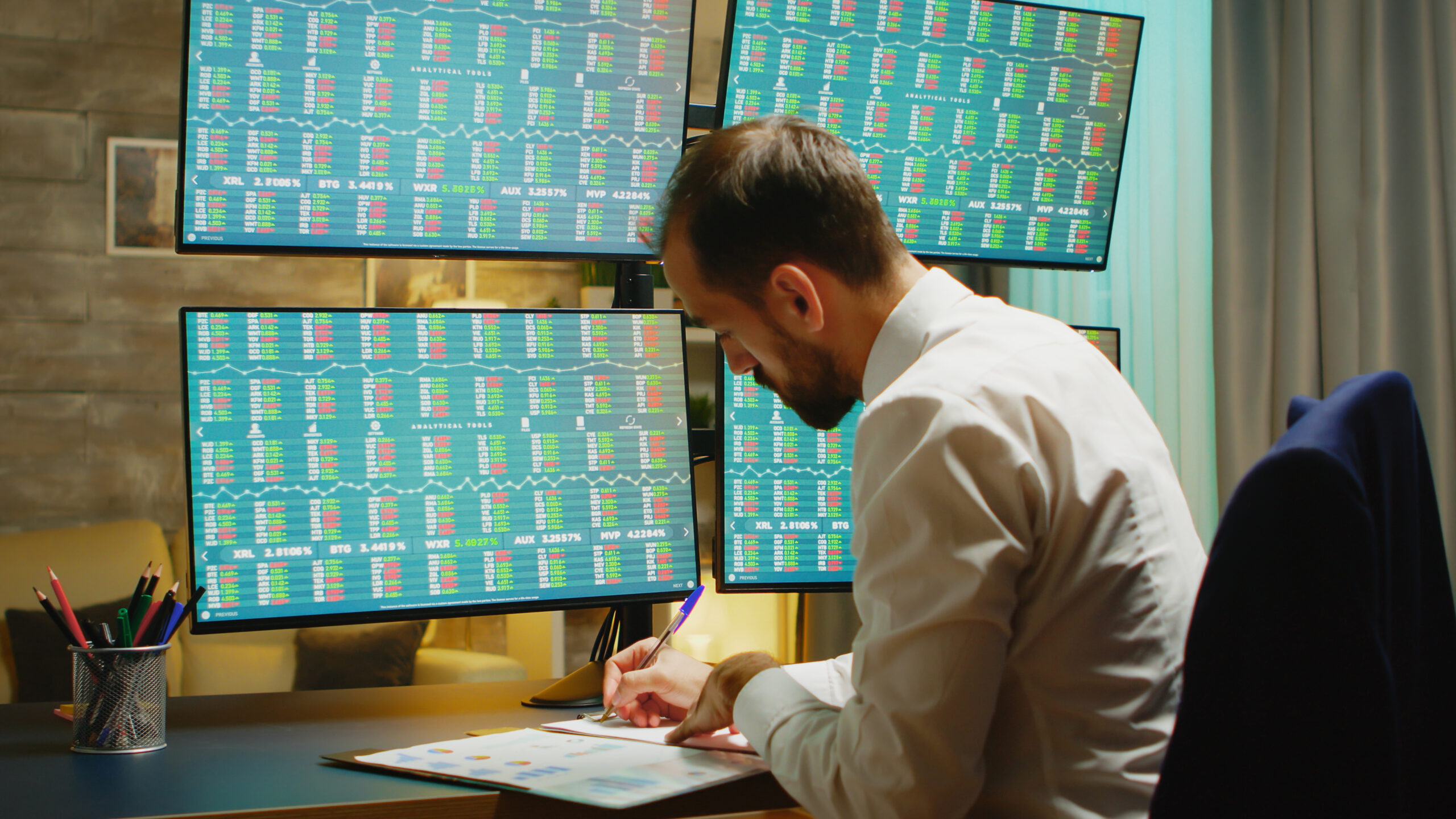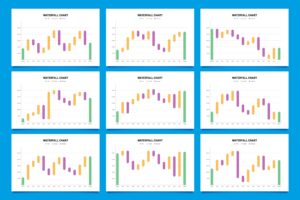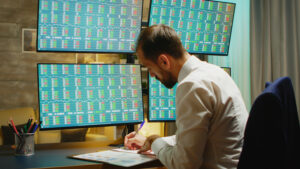Forward testing is a critical step for traders who want to improve their strategies. It reveals your strategy’s performance under actual, unfolding market conditions. Traders often call this process paper trading or using a demo account. Backtesting uses old data; forward testing checks strategies in real or demo setups.
It helps spot what works and what needs improvement in your strategy. This helps in reducing risk and building confidence. This guide outlines how to forward test and why it truly matters.
Table of Contents
Forward Testing Uncovered: How It Works, Why It Matters, and What You Gain
You test your trading plan in a simulated or real-time environment without risk. You monitor your strategy’s behavior without putting actual funds at risk. It gives you a preview of how the system behaves under different market situations.
Traders use it to confirm if their strategy works outside of historical charts. The process helps identify if the strategy needs tweaks before real investments are made.
Also Read: Support & Resistance
Differences Between Forward Testing and Backtesting
Many traders confuse it with backtesting. Though both are important, they serve different purposes.
Backtesting
Uses past market data. Fast and often automated.
Forward Testing
Runs in real-time. Slower but more realistic.
Backtesting helps you get quick results, but forward testing tells you how your plan performs when the market is live. Both methods work better when used together.
Also Read: Trend Reversal
Also Read: Hedging
Steps to Start Forward Testing Successfully
You should follow a structured approach while doing it. This avoids confusion and brings reliable results.
Choose or Develop Your Strategy
Start with a well-defined strategy. It should include defined rules for entries, exits, risk, and money handling. Without this, testing will be random and unhelpful.
Select the Right Platform
Use a demo trading account. Many brokers offer these for free. It reflects how your strategy handles real-time market behavior.
Use Realistic Conditions
Track All Trades
Use a journal to record every trade. Log the reason for entry, exit, and final outcome of each trade. This builds clarity and accountability.
Evaluate Performance Metrics
Look at win rate, risk-reward ratio, maximum drawdown, and average gain/loss. These numbers tell you if your strategy is stable.
Stick to the Plan
Don’t change your rules during testing. It is not about guessing; it’s about discipline.
Also Read: Nifty Expiry
Benefits of Forward Testing
It gives many long-term benefits to serious traders:
Builds Confidence in Strategy
When you follow a system that works in real-time, your belief in it grows stronger. Confidence leads to consistent execution.
Reveals Weaknesses Early
Even solid systems can break under pressure. It shows you what fails early on, so you can make smart changes.
Improves Real-Time Decision Making
Also Read: ETFs Treasure
Challenges Faced in Forward Testing
Also Read: Technical Analysis
Also Read: Swing Trading
How Long Should Forward Testing Last?
Also Read: Sector Rotation
Tools to Use for Forward Testing
You don’t need fancy tools. Simple and reliable ones work best.
Best Software for Tracking
Reliable Brokers for Demo Testing
Choose brokers that offer real-time simulated accounts. This keeps your testing realistic and responsive.
Use these tools to organize your data and stay on track.
Also Read: Double Bottom
Forward Testing in Different Markets
It can be applied in all types of markets:
Stocks
Test daily or intraday strategies.
Forex
Popular for forward testing.
Crypto
Great for high-volatility strategy testing.
Adapt your testing approach based on market behavior. This ensures more relevant results.
Also Read: Double Top
Emotional Management During Forward Testing
One of the toughest parts is managing emotions. Forward testing without money still affects psychology.
Stay calm after losses. Don’t get overconfident after wins. Emotional discipline improves your trading edge.
Also Read: Effective Intraday Trading
Also Read: Gift Nifty
Forward Testing Mistakes to Avoid
Many traders make avoidable mistakes while forward testing:
- Changing strategy mid-way
- Ignoring market news
- Overtrading to speed up results
- Not reviewing trade logs
Avoid these common errors to get better results and reliable data.
Also Read: Colour Trading Mastery
How to Know If Forward Testing Is Working
Also Read: Trend Line
When to Move from Forward Testing to Live Trading
You should switch only when:
- You have 20–30 successful test trades
- Your strategy has low drawdown
- You’ve faced at least one losing streak
- Your emotions are under control
Such results indicate when you’re prepared for live market trading with capital.
Also Read: Smart Money Concept
FAQs About Forward Testing
Is forward testing still needed if I’ve already done backtesting?
No, you need both backtesting and forward testing for reliable results.
How long should I forward test?
At least 1–3 months or 20 trades.
Do I need special tools for forward testing?
Is forward testing only for beginners?
No. Even experienced traders use it when building new systems.
Does forward testing guarantee profit?
Not at all. It improves reliability but doesn’t promise success.
Also Read: What is Commodity Trading
Conclusion
It is a wise and essential move for all serious traders. It provides live feedback unmatched by any backtesting or theory-based approach. With the right process, it turns theory into practical skill.
Follow your strategy, monitor results, and let the market teach you consistently. These habits shape profitable trading systems. Whether you trade forex, stocks, or crypto, forward testing sharpens your strategy and your mind. The results may not come fast, but they are long-lasting and powerful.
Also Read: Top & Bottom Signals







